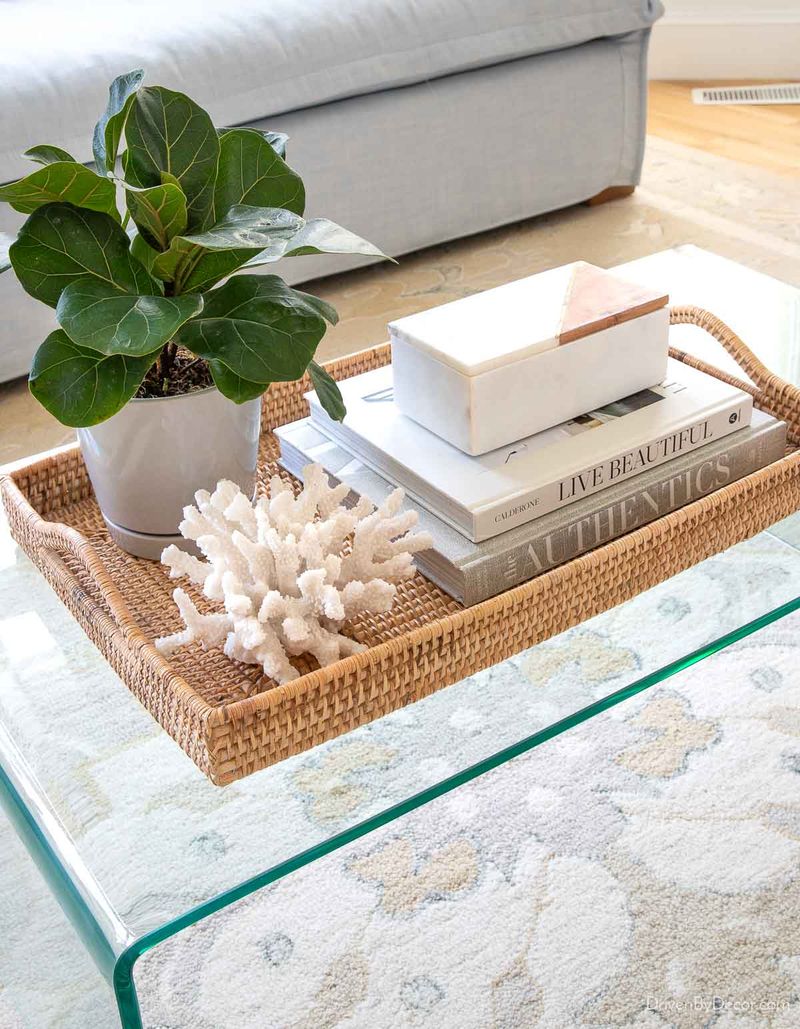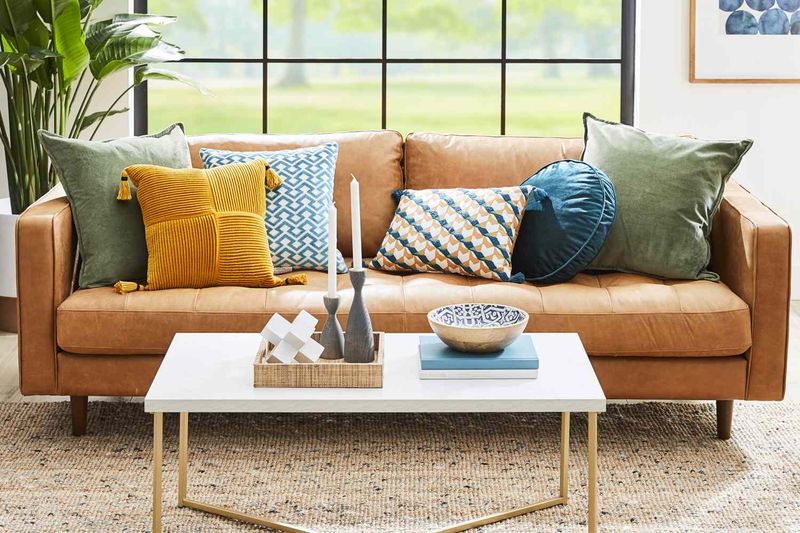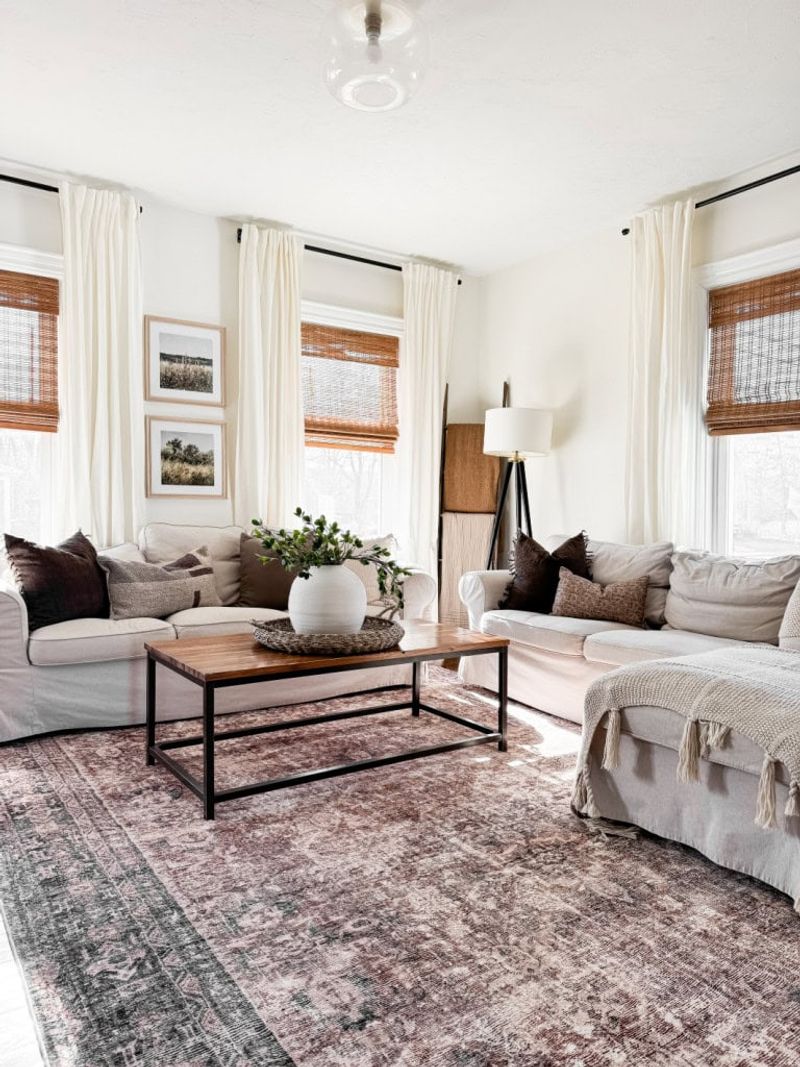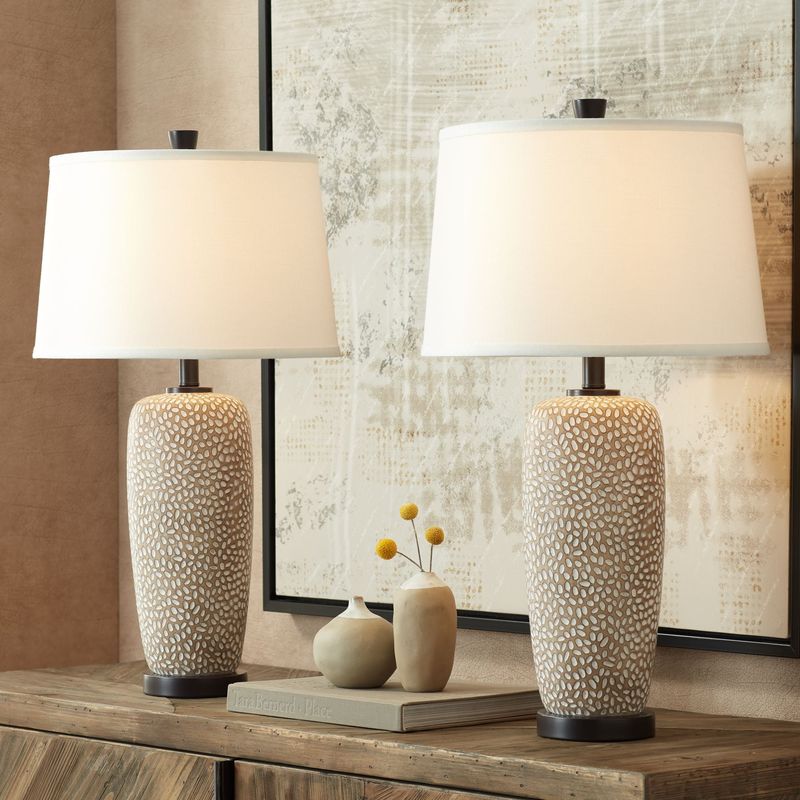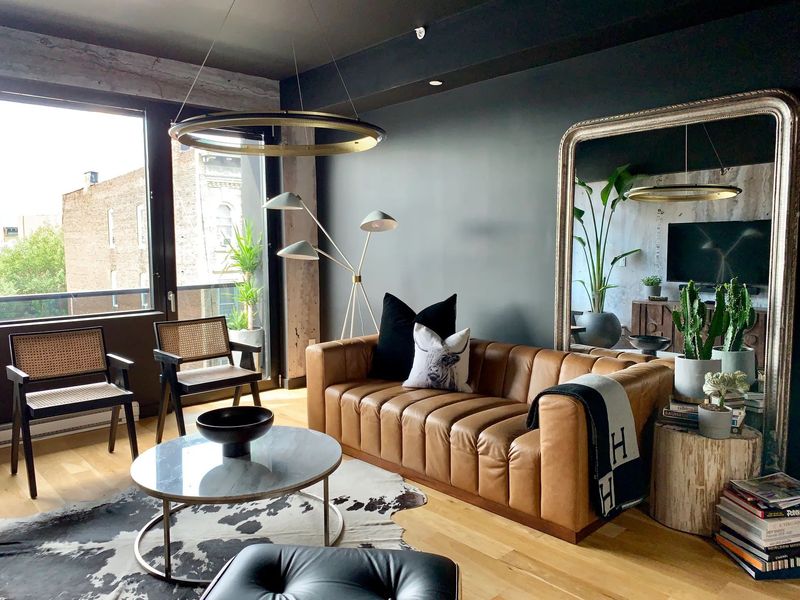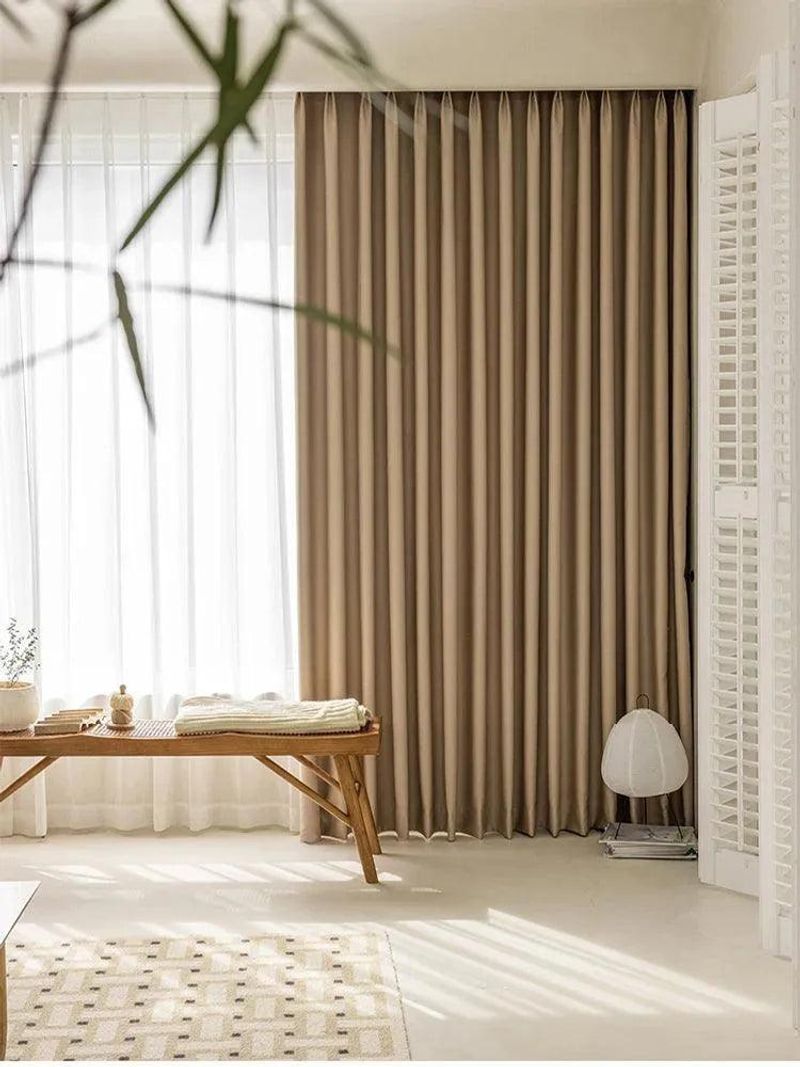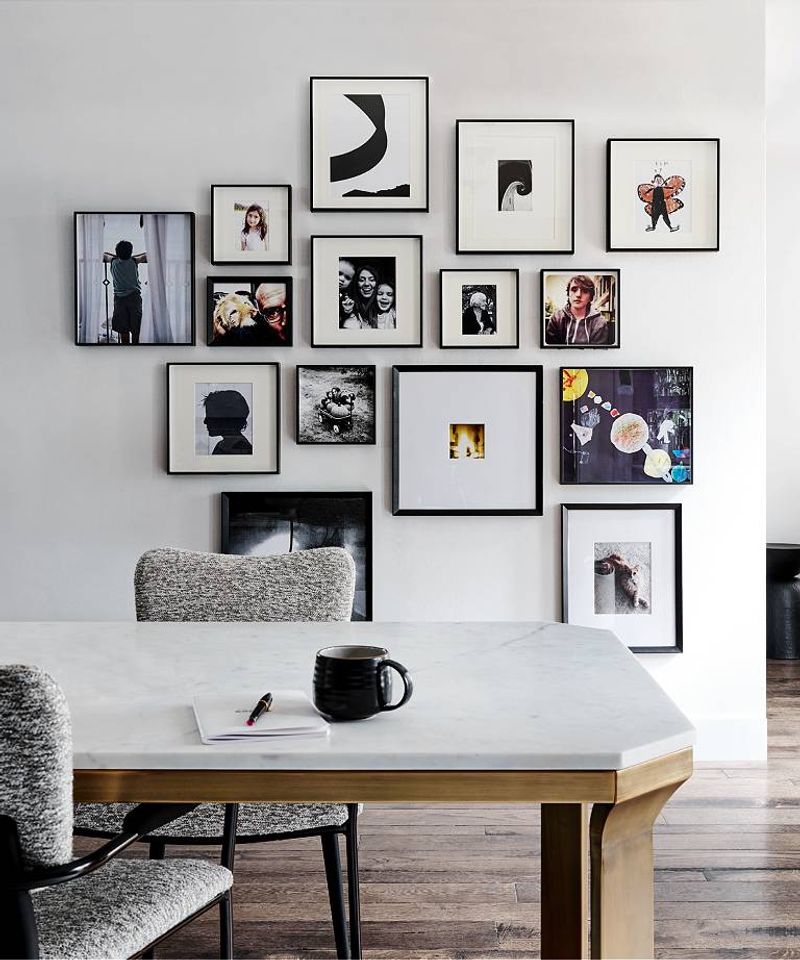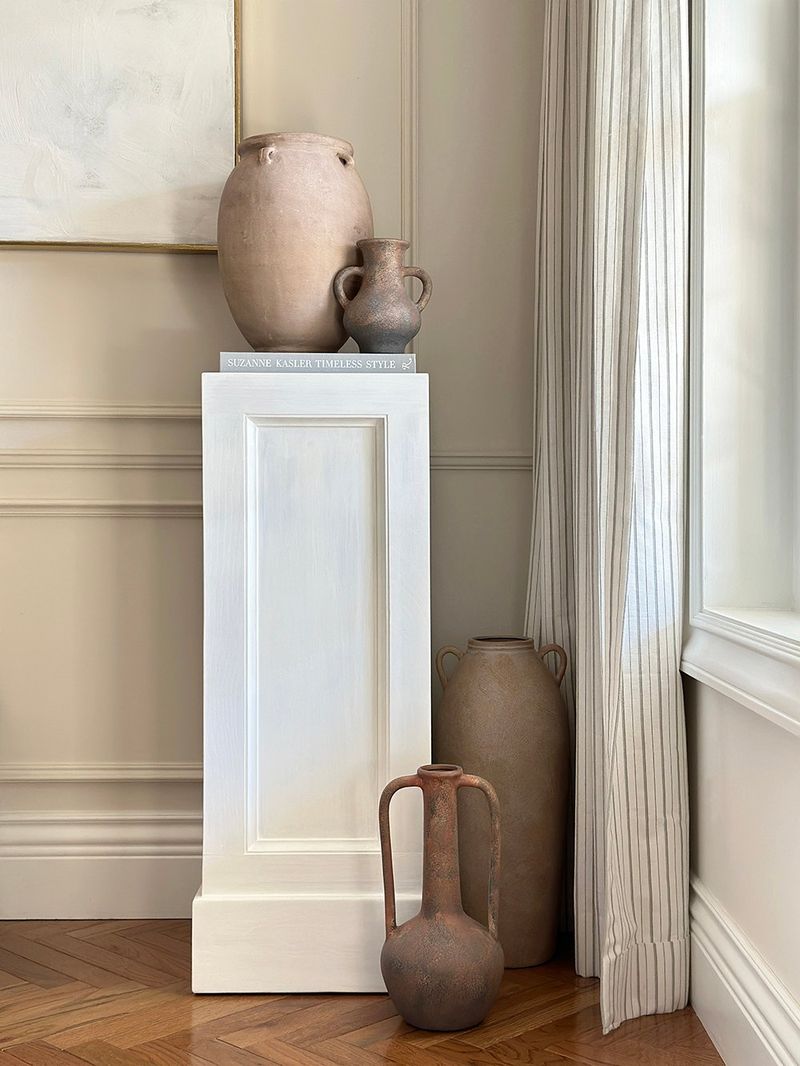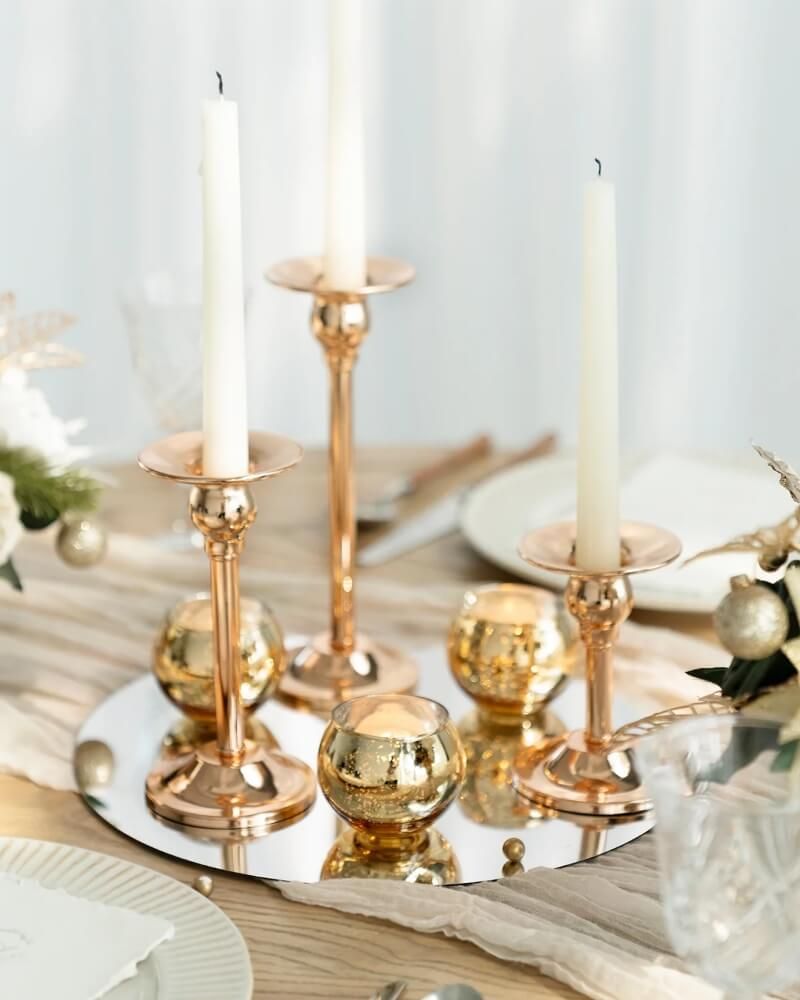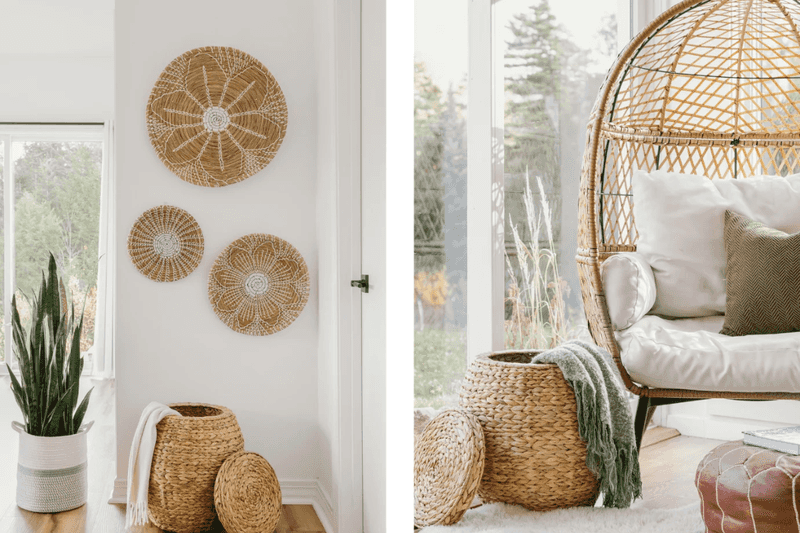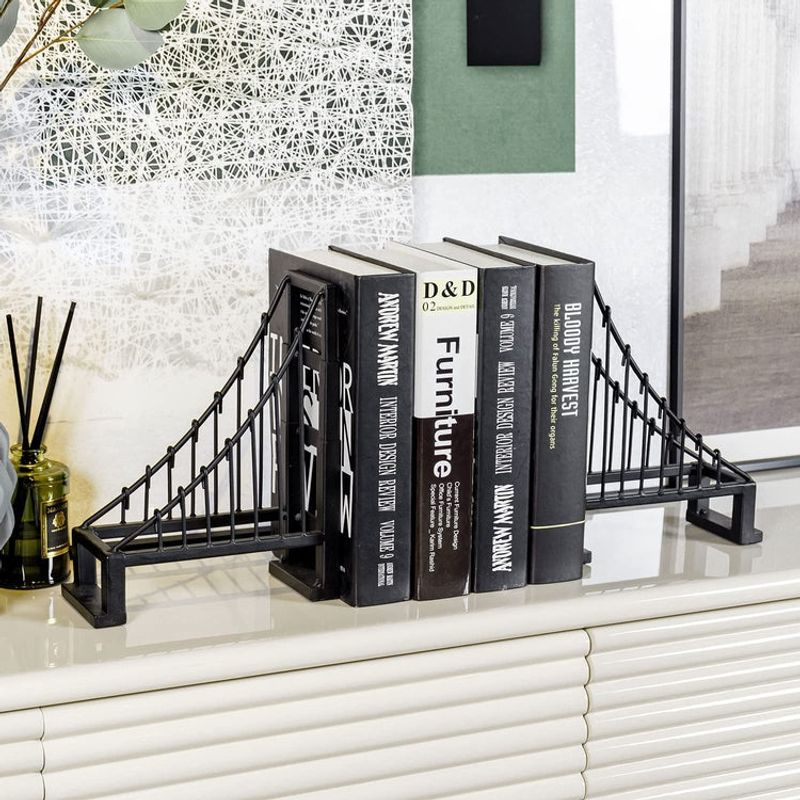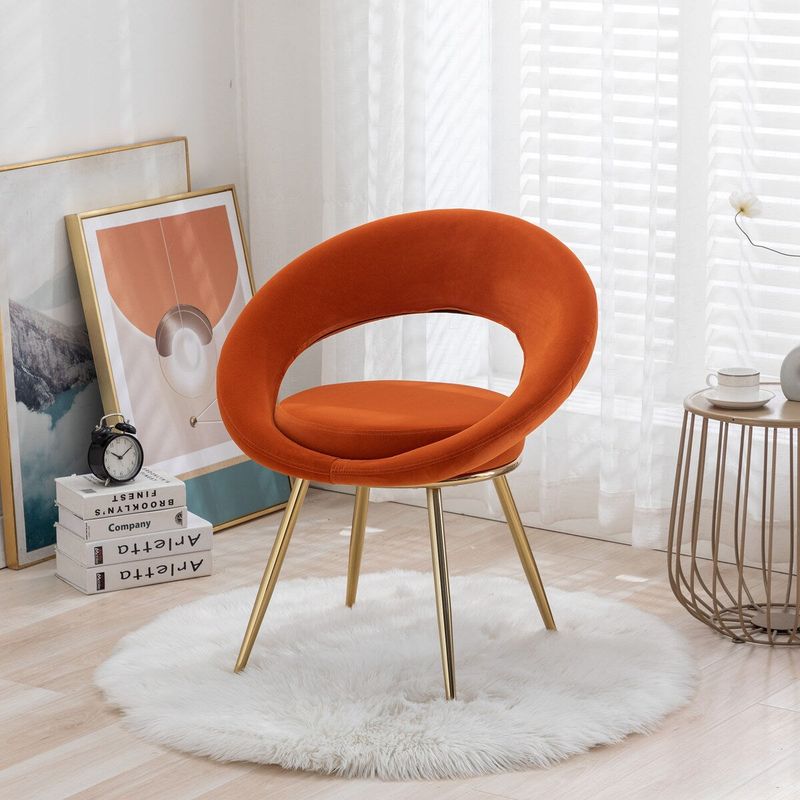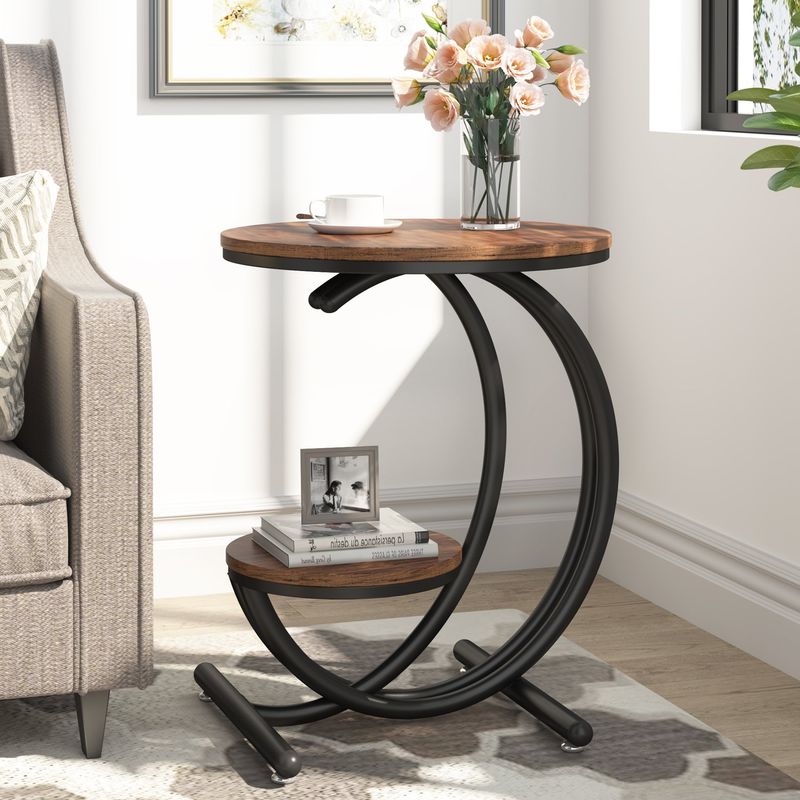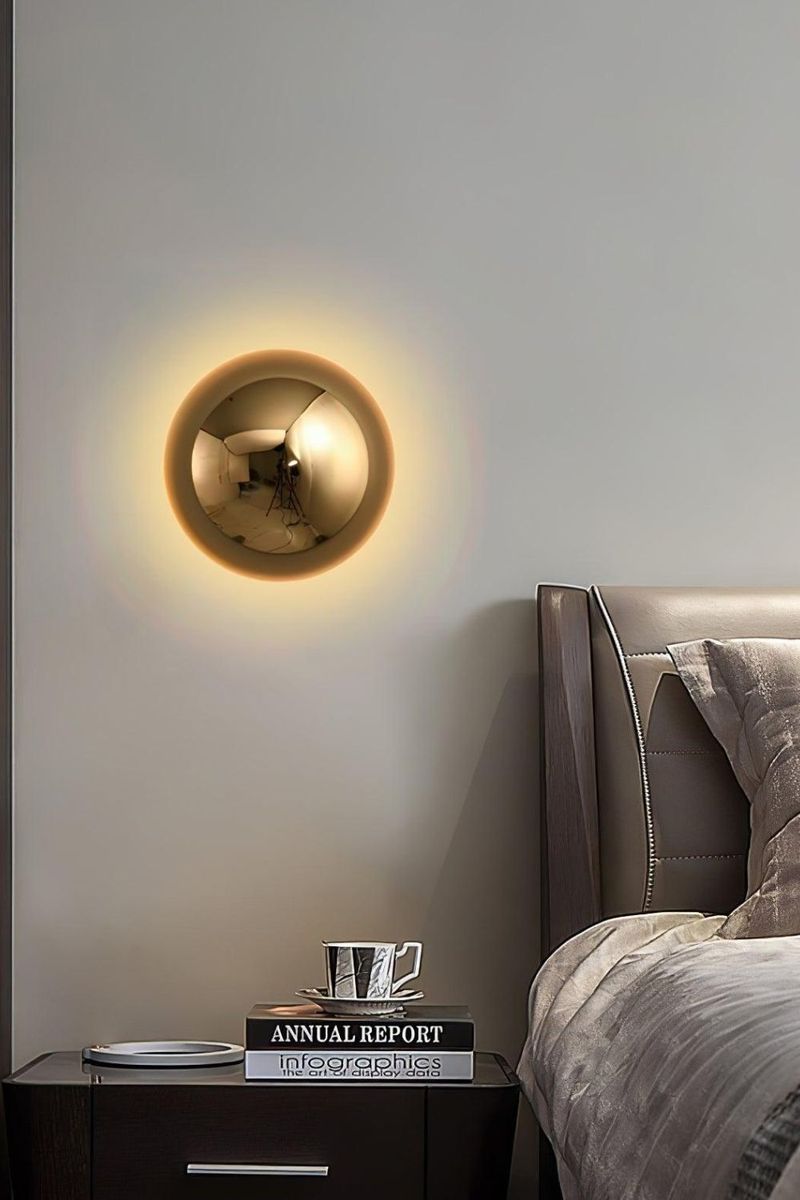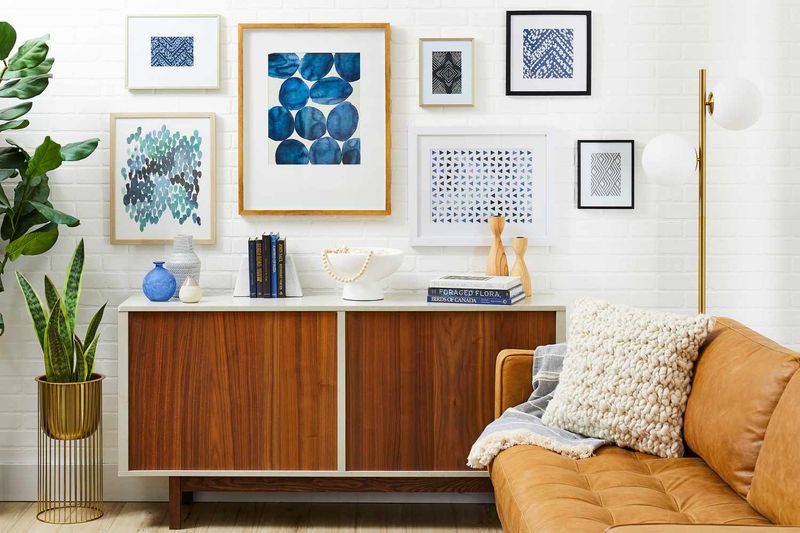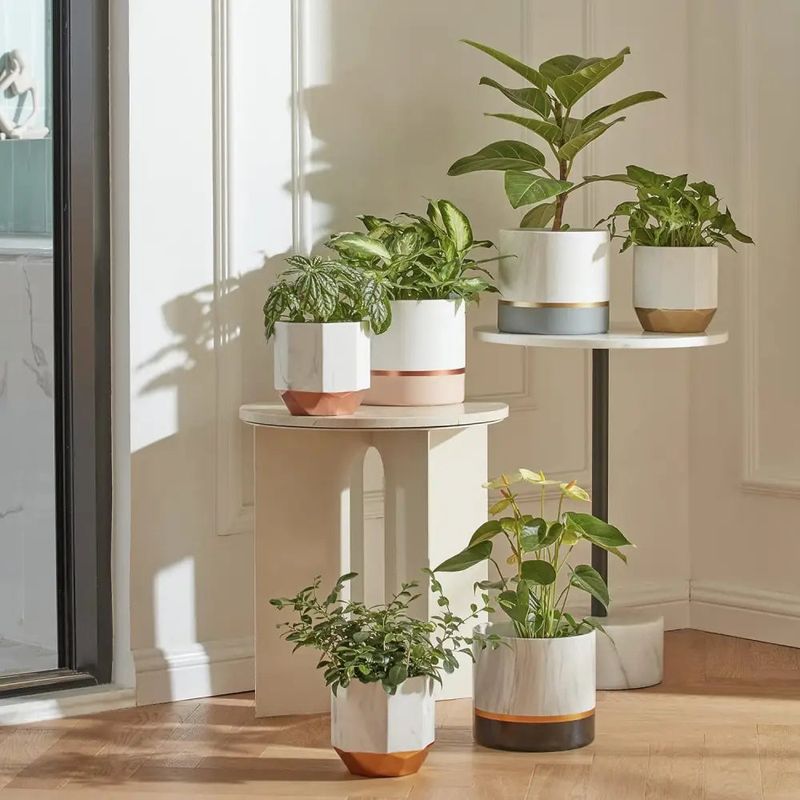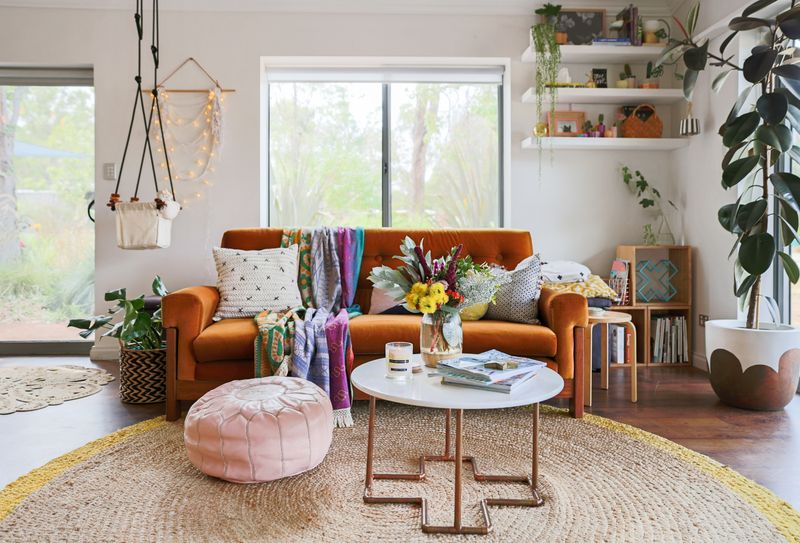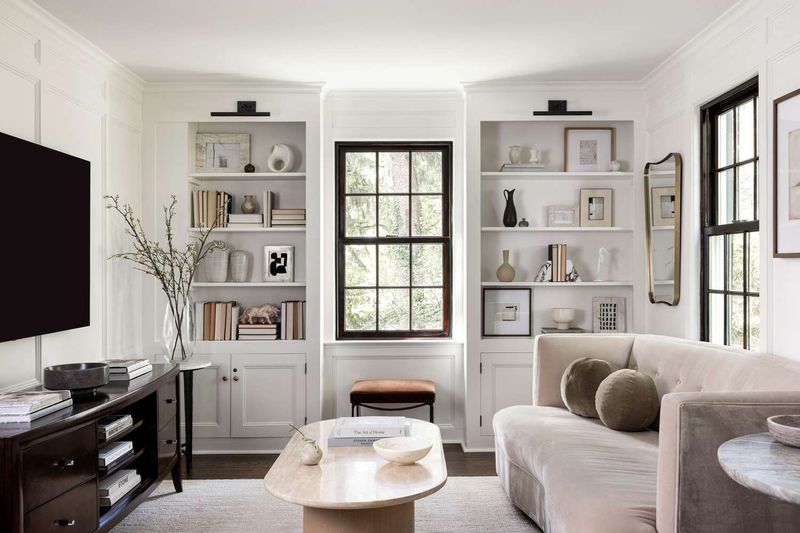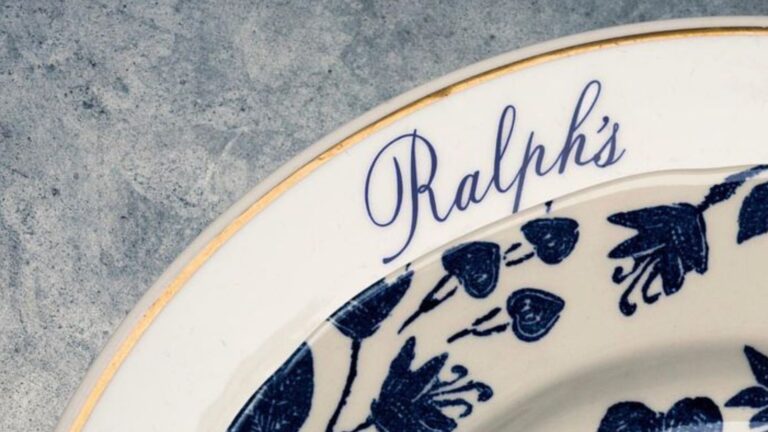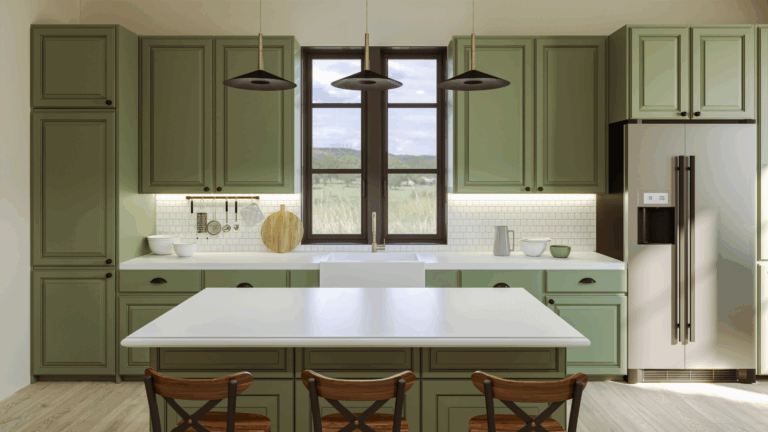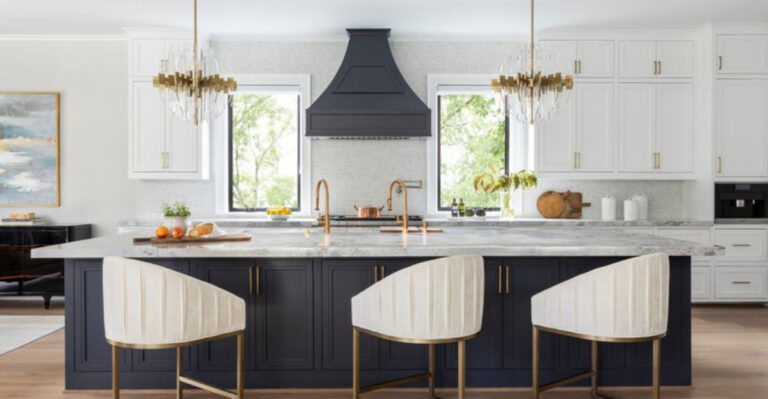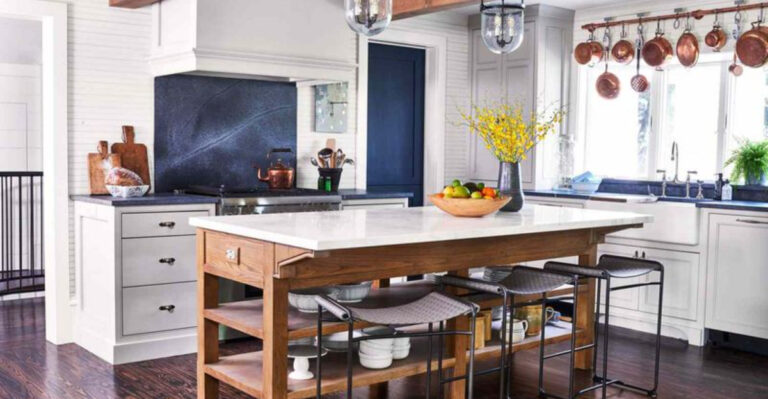20 Simple Purchases Which Are Designer Favorites For Instantly Making Any Room Feel Cohesive And Complete
Have you ever walked into a perfectly styled room and wondered what magic makes it feel so put-together?
Professional designers know that cohesion doesn’t require a total renovation – just a few strategic additions are enough to make a room shine.
The right accessories can transform a disconnected space into a harmonious haven that reflects your personal style. So, take a look at 20 designer-approved purchases that can instantly elevate any room from ‘almost there’ to ‘absolutely perfect.’
1. Decorative Trays
Beyond mere organization, these stylish surfaces create intentional groupings that make random objects look curated.
When selecting your perfect tray, consider materials that complement your existing decor—brass for glamour, wood for warmth, or acrylic for modern spaces. Place one on ottomans, coffee tables, or vanities to instantly create order from disorder.
2. Matching Throw Pillows
You’d be amazed at how quickly mismatched furniture finds harmony when united by coordinated cushions. The secret lies in choosing pillows that pull colors from other elements in your room.
For maximum impact, play with varying textures while maintaining a cohesive color story. Mix solids with subtle patterns, velvet with linen, or smooth with textured fabrics. Remember the designer’s rule: odd numbers (three or five) create more visually interesting arrangements than even groupings.
3. Cozy Area Rugs
Wondering why your furniture grouping feels disconnected? The answer might be right under your feet—or rather, it should be! A properly sized area rug anchors floating furniture pieces into a unified conversation area.
When shopping, remember this golden rule: all furniture legs should either rest completely on the rug or all front legs should touch it. Too-small rugs create a disjointed, floating sensation that undermines the cohesion you’re trying to achieve.
4. Stylish Table Lamps
Forget harsh overhead lighting! Strategically placed table lamps create pools of warm illumination that instantly make rooms feel more inviting and intentional.
For maximum impact, place pairs on matching side tables, console tables, or nightstands. The symmetry creates balance while the soft glow transforms atmosphere. Look for bases that complement your decor style and shades that diffuse light pleasantly—creamy whites and soft beiges cast the most flattering light on faces.
5. Large Statement Mirrors
Magical is the only word to describe what happens when you hang a generously sized mirror in a small or dark space. These reflective beauties instantly double visual space and bounce light into shadowy corners.
For maximum impact, position your mirror to reflect something beautiful—perhaps a window view or an art piece opposite. Round mirrors soften rooms with many straight lines, while rectangular options reinforce traditional spaces. Either way, proper scale is crucial—undersized mirrors look like timid afterthoughts.
6. Neutral Curtains
Ever noticed how hotel rooms always feel finished? The secret often hangs right by the windows. Floor-length curtains frame views and add instant architectural interest to plain walls.
When selecting window treatments, remember that hanging them high and wide creates an illusion of taller ceilings and larger windows. Opt for neutral fabrics that blend rather than compete with your decor. The right curtains should whisper elegance, not shout for attention.
7. Coordinating Picture Frames
Random photo displays scattered throughout a room create visual chaos rather than cohesion. The solution? Unify your treasured memories in coordinating frames that speak the same design language.
Consider creating a gallery wall with frames in the same finish but varying sizes, or place matching frames on different surfaces throughout the room. Black frames create drama, metallics add glamour, while natural wood brings warmth. The consistency creates a subtle through-line that ties diverse elements together.
8. Sculptural Vases
Empty tabletops and shelves scream “unfinished business” to designer eyes. Enter sculptural vases—beautiful whether filled with flowers or standing proudly empty as art objects themselves.
Group vases in odd numbers for visual interest, varying heights but maintaining material or color cohesion. Ceramic, glass, or metal options each bring different energy to a space. Place them strategically on mantels, console tables, or dining tables to add personality and polish.
9. Elegant Candleholders
Few accessories add ambiance faster than candleholders scattered strategically throughout a room. Even unlit, these luminous accents create focal points that draw the eye around the space, creating rhythm and balance.
Mix metals, heights, and styles while maintaining some unifying element—perhaps all silver or all black bases. Group them on mantels, dining tables, or bathroom counters. For safety and convenience, consider flameless candles with timers that create the same magical glow without worry.
10. Woven Baskets
Clutter is the arch-nemesis of cohesion, which explains why designers adore beautiful baskets. These textural workhorses hide everyday mess while simultaneously adding organic warmth to any space.
Tuck them under consoles to corral shoes, beside sofas for blanket storage, or on shelves for miscellaneous items. For a unified look, choose baskets in similar materials but varying sizes. Natural fibers like seagrass, water hyacinth, or rattan bring earthy texture to even the most contemporary spaces.
11. Sleek Bookends
Books stacked haphazardly on shelves create visual chaos rather than designed intention. A pair of substantial bookends transforms random volumes into curated collections that add personality and polish.
Look for options with some visual weight—marble, concrete, brass, or sculptural designs make the strongest statement. Beyond mere functionality, bookends serve as decorative objects themselves. Use them to create smaller groupings within larger shelves, allowing breathing room that prevents the cluttered look of continuous books.
12. Textured Throw Blankets
Like jewelry for your furniture, the right throw blanket adds that perfect finishing touch to beds, chairs, and sofas. Beyond mere decoration, these tactile treasures invite touch and create visual layers essential to designer spaces.
Drape them casually over sofa corners or chair arms rather than folding precisely. The relaxed arrangement suggests comfortable living, not museum-like perfection. Choose materials that contrast with your upholstery—chunky knits against smooth leather or lightweight linen against plush velvet.
13. Chic Accent Chairs
Missing that certain something in your living space? An accent chair might be the personality piece your room craves. Unlike matching furniture sets that can feel flat, a distinctive chair adds character while providing additional seating.
Look for silhouettes or upholstery that complements—but doesn’t match—your existing pieces. The best accent chairs serve as functional art, perhaps featuring a bold fabric or interesting shape. Position them at angles to sofas or in empty corners to create inviting conversation nooks.
14. Polished Side Tables
Balancing practicality with style, side tables rank among designers’ favorite quick-fix solutions for rooms lacking polish. These versatile pieces provide surface space while filling awkward gaps between larger furniture.
For maximum cohesion, choose tables that echo elements from your existing decor—perhaps metal finishes that match your lighting or wood tones that complement your flooring. Varying heights and shapes creates visual rhythm, while maintaining some consistent element ties everything together.
15. Tasteful Wall Sconces
Lighting makes or breaks atmosphere, which explains why designers frequently add wall sconces even in rental spaces (wireless options exist!). These mounted fixtures free up table space while creating flattering pools of light at eye level.
Flank artwork, mirrors, or beds with matching sconces for instant architectural interest. The symmetry creates balance while the gentle illumination adds depth to flat walls. Choose finishes that coordinate with your existing hardware for a thoughtfully curated look.
16. Minimalist Clocks
Functional art at its finest, a well-chosen wall clock serves both practical timekeeping and aesthetic purposes. Unlike digital displays, analog clocks add circular geometry that softens rooms dominated by rectangular shapes.
Select styles that complement your decor—sleek and minimal for contemporary spaces, ornate for traditional rooms. Size matters tremendously—undersized clocks disappear, while properly scaled options make confident statements. Hang them over console tables, in kitchens, or as focal points on gallery walls.
17. Cohesive Art Prints
Bare walls practically scream “unfinished business” to design professionals. The quickest fix? A collection of art prints that share some unifying element—similar frames, complementary colors, or thematic connections.
Rather than random accumulation, intentionally select pieces that speak to each other visually. Consider creating a gallery wall or placing coordinating pieces in different areas of the same room. The repetition of visual elements creates rhythm that guides the eye pleasingly throughout the space.
18. Ceramic Planters
Living elements transform sterile spaces into vibrant homes, which explains designers’ love affair with houseplants. The secret to elevating ordinary greenery? Distinctive planters that complement your decor style.
Upgrade nursery plastic pots to ceramic, concrete, or woven vessels that coordinate with your color scheme. Vary heights and shapes while maintaining some consistent element—perhaps all white ceramics or all textured neutrals. Group smaller plants in threes while allowing statement plants to stand alone.
19. Classic Ottomans
Multi-tasking marvels, ottomans serve as coffee tables, extra seating, and footrests while visually completing furniture groupings. Their soft forms counterbalance angular pieces, creating welcome contrast.
Choose options that coordinate with your existing upholstery without matching exactly—perhaps picking up secondary colors from your room’s palette. Round or oval shapes work beautifully in rooms dominated by rectangular furniture, while storage ottomans offer hidden organization. Position them where conversation naturally flows.
20. Streamlined Shelving Units
Vertical real estate often goes unused, which is why designers frequently recommend adding shelving to maximize both storage and display opportunities. Well-styled shelves create focal points while solving organizational challenges.
For cohesive displays, follow the designer’s rule of thirds—books, objects, and negative space. Group similar items together, vary heights, and incorporate both horizontal and vertical elements. The goal is curated collections rather than cluttered accumulation, with enough breathing room to appreciate each item.


